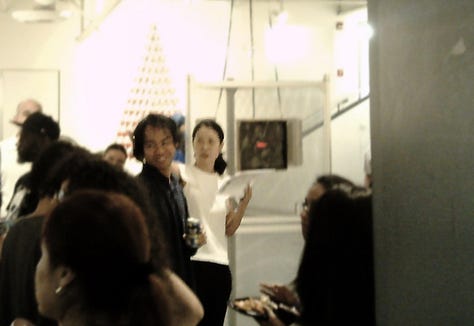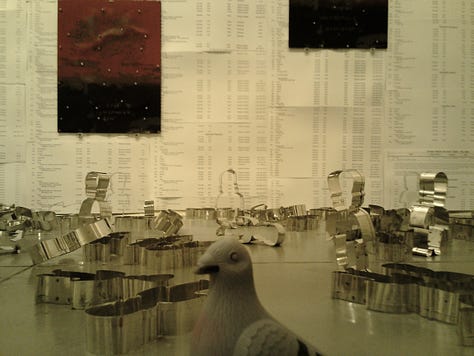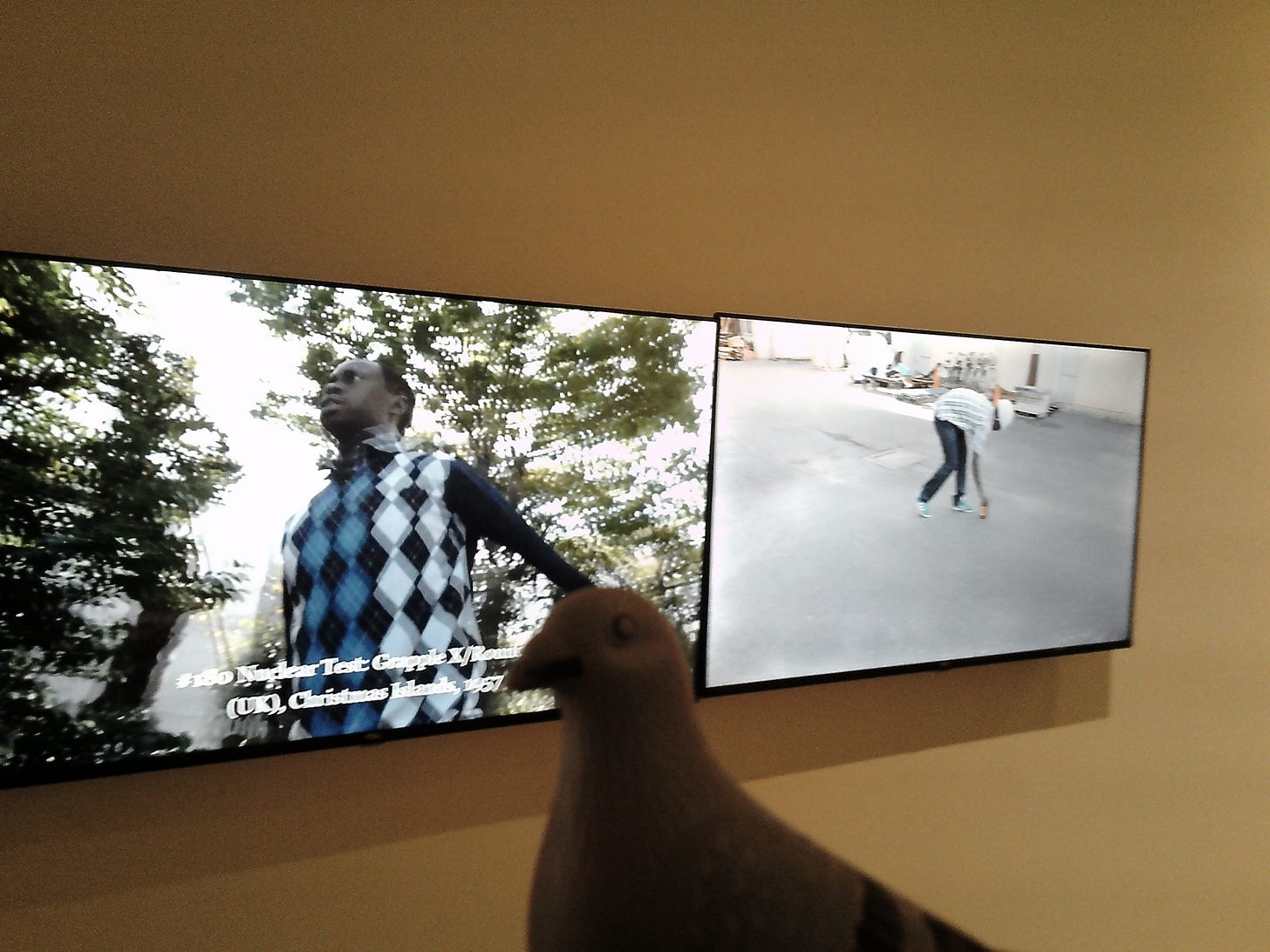Dual exhibits at NJCU Visual Arts Gallery reflect on 80 years since atomic bombings of Hiroshima and Nagasaki
On "Take it home, for (__) shall not repeat the error" and "Atomic Cowboy: The Daze After"



By D. Menzies
Sept. 25th marked the opening reception for “Take it home, for (__) shall not repeat the error” and “Atomic Cowboy: The Daze After” at the New Jersey City University Visual Arts Gallery. Both “Take it home …” curator Souya Handa and “Atomic Cowboy” creator Nobuho Nagasawa were on hand as each side of the gallery was a venue for what would be striking presentations on their own. Together, they make for a far-reaching, sometimes surprising examining of the atomic bombings of Hiroshima and Nagasaki in 1945.
In total, these two bombings killed between 150,000 and 246,000 people (possibly more), with most of them being civilians.
The nuclear fallout is addressed literally and metaphorically; Nagasawa’s “Atomic Cowboy” does both, in part, by showing how figures in U.S. pop culture were enmeshed in where — and on some level perhaps why — the bombs were ultimately developed in the way that led to their being used. Pictures are displayed in order of the date of their passing of Hollywood figures who include Humphrey Bogart, John Wayne and “trickle down economics” torchbearer Ronald Reagan; all of these figures, with the latter two, in particular, being associated with roles embodying cowboy notions of heroism, worked on a project that shot at a U.S. nuclear testing site. Though some of them had other factors that significantly contributed to their premature deaths, when taking into account the number who died from cancer in general, time spent on some of the most irradiated ground the country’s ever had may have had an effect on them.
Handa’s exhibit includes his own pieces — which, housed in what sort of looks like scarred, almost immutable fixtures in an immutable world, try to speak to how “we” can change that — along with pieces by Sixte Kakinda, Kei Ito, and Layla Yamamoto.

If I didn’t know anything in particular about Congo-born Kakinda’s three-panel video installation “Intimate Moments,” I’d get the impression of someone trying to contemplate something and short circuiting because of the magnitude of it. In the video, Kakinda travels through Hiroshima doing symbolic acts. With more context through artist statements of what those symbolic acts mean to Kakinda — including the spreading of something to heal the ground — “Intimate Moments” made me wonder about someone feeling tied to actions or things related to one’s homeland.
The Congo’s Shinkolobwe mine was mined for its Uranium in the early 20th century when the Congo was under Belgium rule. The vast majority of the Congolese people didn’t benefit from the mining. And it’s doubtful any of the workers ( for whom saying they “toiled” may be an understatement) knew where the Uranium they were mining would be used. As this is typed, the Congo — eastern Congo, specifically — is experiencing one of the world’s most “silent” genocides — fueled reportedly, in some part, by forces still vying for control of the minerals the country is rich in.
However disenfranchised the people of the Congo are, the idea of contemplating horror with a tangential relationship to where they reside resonates in both exhibits. But an idea of responsibility is particularly embodied in the title of the exhibit curated by Handa, in his piece that gives the show that title which explores the who of “(__) shall not repeat the error” on an epitaph on the Hiroshima Peace Memorial, “Cenotaph for the A-bomb Victims.”
Chilltown Blues got a chance to talk to Handa about the exhibit about his ideas for the show and who (we) are.


